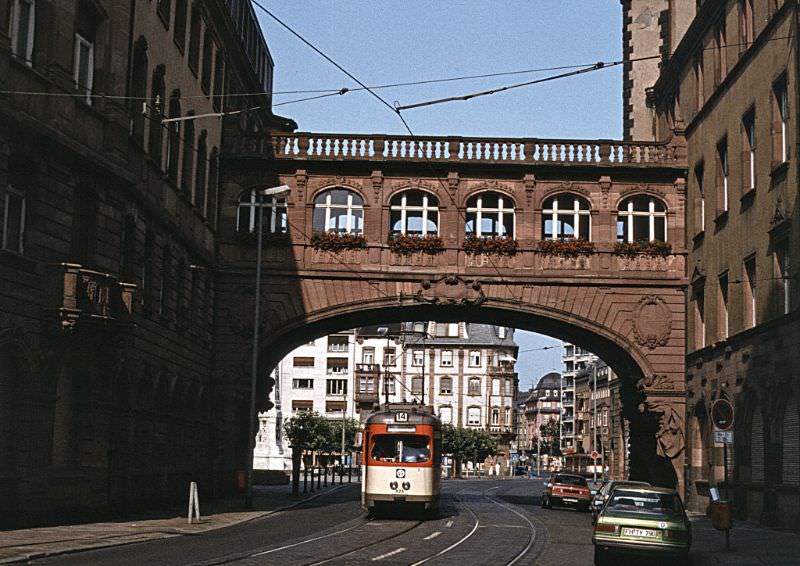If there’s one thing that consistently stands out in any conversation about Frankfurt during the mid-twentieth century, it’s the trams. These robust, charming vehicles were not just modes of transportation, but a crucial part of the city’s social and cultural fabric from the 1960s to the 1980s.
In the 1960s, trams in Frankfurt were at the heart of the city’s public transportation. They offered an inexpensive, efficient, and reliable mode of transport, connecting various neighborhoods, city attractions, and essential facilities. Comprising of different models, including the iconic N-type, the trams were more than just passenger vehicles. They were, in fact, a microcosm of Frankfurt’s bustling community, with people from all walks of life sharing a space, interacting, and being a part of each other’s daily lives.
As we moved into the 1970s, Frankfurt’s trams underwent significant transformations. With technological advancements, newer models like the articulated R-type trams started to make an appearance, featuring better facilities, greater capacity, and enhanced comfort. The tram routes were also expanded during this period to serve a wider population, truly embedding them in the life of the city.
During this decade, trams were not only a mode of transportation but also a popular subject for artists and photographers. Their charm, combined with the city’s architectural beauty, made for captivating urban landscapes. Tram drivers, conductors, and even the regular commuters became familiar faces, forming an extended community that was uniquely Frankfurt.
By the 1980s, the tram network in Frankfurt had become extensive and sophisticated, featuring electric trams that were eco-friendly, quieter, and faster. However, the growth of private car ownership and the improvement of other forms of public transport started to affect the tram’s dominance. Even so, the trams continued to hold a special place in the city’s heart, symbolizing the charm and nostalgia of an era.
What’s remarkable about Frankfurt’s trams is that they were more than just vehicles or modes of transport. They were important social spaces, where people chatted, read, argued, and fell in love. These were spaces where friendships were formed, stories were shared, and the city’s pulse was truly felt.












